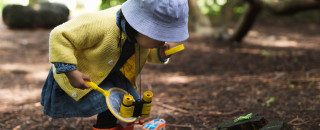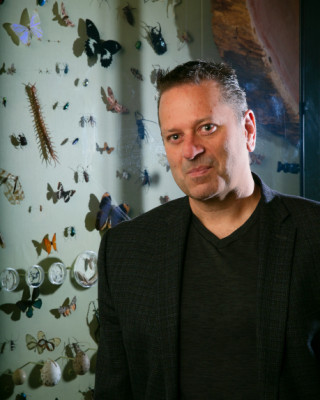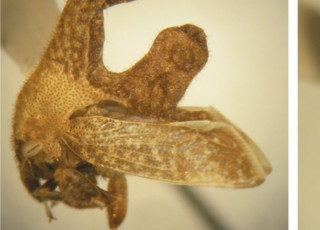On Charles Darwin and the Thrill of Discovery
For many, curiousity about the natural world starts at a young age. iStock photo
By Jason Cryan
The scientific world observed the birthday of Charles Darwin this past Saturday, February 12. Many organizations around the world celebrated in their own ways, including several institutions right here in Utah. Here at the Natural History Museum of Utah, we’ve been collecting “Love Letters To Science” to celebrate not only Darwin’s birthday, but also Valentine’s Day. I had the distinct honor to deliver the keynote address for the annual Darwin Day celebration at Utah Valley University last Friday, an annual celebration for almost 15 years! The Bean Life Science Museum on the BYU campus is celebrating Darwin Day by displaying a rare first-printing copy of Darwin’s On the Origin of Species--something many nerds like us would love to see!
These annual celebrations help us remember and appreciate Darwin’s influence on science. More importantly, celebrating Darwin Day inspires us to follow our curiosities about nature. In On the Origin of Species, Darwin muses that “From so simple a beginning, endless forms most beautiful and most wonderful have been, and are being, evolved.” (Chapter 14). Many of us decide to pursue careers that intersect with nature and science precisely because of our childlike wonder over the ‘endless forms’ of life, a childlike wonder that never fades as we find new and ever more bizarre examples of evolution: strange animal and plant adaptations that sometimes defy logical explanation.
Researchers across the globe continue to discover species previously unknown to science. Many hundreds of new species were formally described in scientific journals in 2021 alone! And yet, we still know so very little about our natural world. Currently, there are perhaps one million species of insects known to science, and yet many estimate that there are approximately 10 million insect species in existence. It boggles my mind to think about all of the yet-undiscovered animals, plants, and microorganisms all around us.
It’s that thrill of discovery that drives so many scientists.That moment when a researcher realizes that they’ve found something different, something new. Very often we think about such discoveries being marked with a gleeful shout of “EUREKA!” but, in reality, moments of discovery are more often realized with a softy spoken “Huh. That’s odd….”, followed by a satisfied, childlike, sense of wonder.
Jason Cryan, Ph.D., is a biodiversity scientist and the executive director of the Natural History Museum of Utah. NHMU is part of the University of Utah in Salt Lake City. Our mission is to illuminate the natural world and the place of humans within it. In addition to housing outstanding exhibits for the public, NHMU is a research museum. Learn more.




